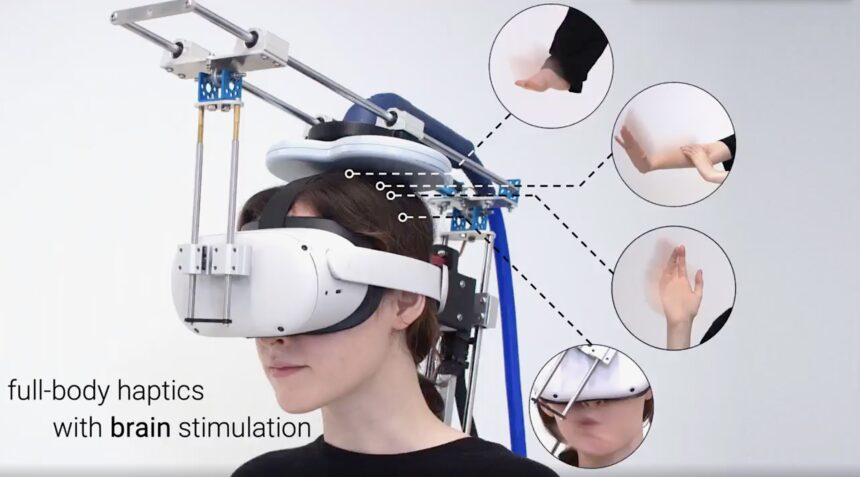
Researchers at the University of Chicago have unveiled a device that uses non-invasive brain stimulation to simulate haptic sensations in different parts of the body.
The device has been termed the “Haptic Source-Effector” by researchers Yudai Tanaka, Jacob Serfaty, and Pedro Lopes.
The intention behind the name is to highlight that this is a singular haptic source located on the body, rather than the typical scenario where multiple haptic actuators are worn on various body parts.
The researchers explain that they use transcranial magnetic stimulation (TMS), a safe technique from neuroscience and medicine, to apply their concept by stimulating specific brain areas with electromagnetic pulses.
The device generates tactile sensations in different body areas, such as the hands, arms, legs, feet, and jaw. A magnetic coil is used to mechanically stimulate the user’s sensorimotor cortex, corresponding to the specific regions of the brain.
The scientists successfully replicated approximately 15 distinct haptic sensations through simulation. These included the kickback from a fired projectile, the sensation of an object striking the leg or hand, the feeling of stepping on a box, and the simulation of an explosion near the jaw.
The device has a few drawbacks mentioned by the researchers: it is too big and heavy for extended use, the range of haptic effects is limited, and it is excessively loud.
You have the option to access and read the complete paper on the internet.
Over the last ten years, numerous methods and devices for providing tactile feedback for hands and bodies have been extensively studied. However, none of these have been found to be viable in real-world applications. Present virtual reality (VR) products solely incorporate haptic sensations into their controllers, and even haptic vests remain limited to a specific user base.
As interesting (or frightening) as the concept behind the Haptic Source Effector may be, turning it into a product and marketing it would be complicated to say the least.
And ultimately, you need to question whether the significant technical exertion is justified for the sake of obtaining slightly enhanced haptics. For the majority of individuals, the challenge of wearing a VR headset on a daily basis is already quite substantial.






